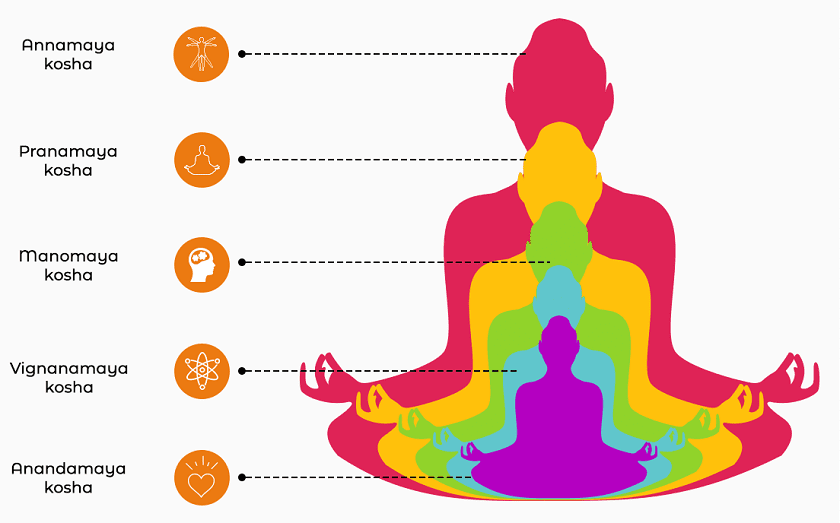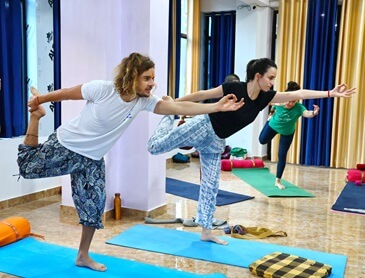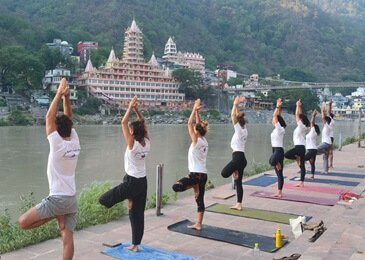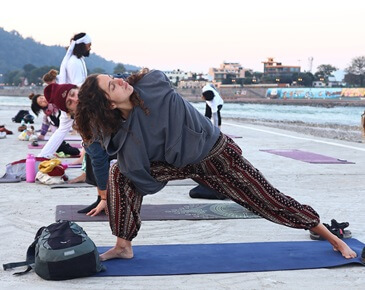
16 Feb. 2022
What are The 5 Koshas in Yoga
THE KOSHAS ARE LAYERS, OR SHEATHS, THAT MOVE FROM THE OUTERMOST LAYER OF SKIN TO THE DEEP SPIRITUAL CORE. THE KOSHAS PROVIDE A FRAMEWORK FOR CONCEPTUALIZING OURSELVES – YOU CAN USE KOSHAS AS POINTS OF REFERENCE FOR SELF-AWARENESS AND EXPLORATION, ALWAYS STARTING FROM THE OUTERMOST THEN TRAVELLING INWARD.
The koshas, or sheaths, were first referenced in the Upanishads, which are part of Vedic literature.
Think of koshas as a road map to take with you on your inner journey. Practicing yoga regularly invokes the right understanding and awareness and clears the mind of delusional thought processes. Many refer to this as ‘waking up.
The koshas can be seen as simple reference points for your experiences and understanding on your journey inward to the true self. You can also use koshas as a tool for focusing your mind, for focusing your awareness on a particular part of your body or consciousness — for observation of the physical and subtle self. Koshas can also be understood as the five dimensions of our existence. Our existence is both a philosophical concept as well a tangible reality at the same time. So are koshas. Koshas are commonly referred to as ‘bodies’, i.e. mental body, spiritual body, etc.
Thinking of the Kosha bodies as ‘layers’, will help you to visualize them easier. Think of Russian dolls; on the outside, there is the physical body, within that you see the energy body, within that, you see the mental body, within that you see the wisdom body and within that, you see the bliss body.
However, even though the Kosha are studied as if they are cut-and-dried separate things, they are still intertwined and inter-penetrate each other. They are constantly influencing each other. An example of this is your emotional state (which forms part of your Manomaya Kosha - mental body): If you are very stressed or unhappy it can make you physically tense, stiff and even create aches and pains (effecting your Annamaya Kosha - physical body).
You can try it in a reverse manner: If you eat well and practice yoga regularly, your health and flexibility improve. When that happens your mood improves, you are happier, which can make you more open-minded and accept — you feel lighter. In this case, your Annamaya Kosha (physical body) is affecting your Manomaya Kosha (mental body).
While we are going to look into koshas as if they are different from each other, it is important to understand that they are just different facets of our existence, which is ultimately one, single whole.
- 1: ANNAMAYA KOSHA - PHYSICAL BODY Practise: Asana, Nutrition This kosha is composed of all physical structures, which is made of five elements. Ayurveda goes deeply into the Annamaya Kosha, analyzes it as composed of seven Dhatus (building blocks). It is strengthened primarily by physical exercises, proper diet, asana, breath, and rest.
- 2: PRANAMAYA KOSHA - ENERGY BODY Practise: Breathing The electrical and vibratory, living energy body. Stimulating, organizing, and retaining energy defines this kosha. Pranamaya Kosha is the life force; in the nerve impulses, breath, bio-electro-magnetic field. Pranayama, visualization, chakra work and others forms of concentration refine awareness of this kosha. Controlling this energy creates a paradigm shift in the mind.
- 3: MANOMAYA KOSHA - MENTAL BODY Practise: Awareness, Mindfulness, Be Here Now This is the space of the mind. Thoughts, emotions, and ego operate from here and the five sensory organs report to it. It is also where memory and intellect work takes place. Breathing practices make it much easier to discipline the mind as Manomaya and Pranamaya are very closely linked. Choosing better decisions and behaviors that make life simple and beautiful is best for realizing the space of Manomaya Kosha.
- 4: VIJNANAMAYA KOSHA - WISDOM BODY Practise: Concentration, Mental Happiness This is the wisdom aspect. It’s developed by awareness and intellect to realize that the other koshas are tools for acquiring self-knowledge. This kosha is like a still point in the mind which observes without judgment and operates from intuition and truth seeking. Its faculties lead to a deeper understanding of the self, perceiving the self.
- 5: ANANDAMAYA KOSHA - BLISS BODY Practise: Meditation, Mantra This is the wisdom aspect. It’s developed by awareness and intellect to realize that the other koshas are tools for acquiring self-knowledge. This kosha is like a still point in the mind which observes without judgment and operates from intuition and truth seeking. Its faculties lead to a deeper understanding of the self, perceiving the self.
- SAMADHI - Becoming Truth Becoming truth exceeds all superficial experiences and goes beyond rational understanding, being awakened beyond limitations or illusions of separateness, there is only infinite wholeness. Each of us has a different internal program to unlock our individual evolution to this divine state beyond the qualities of forms and all the keys we need are right inside of ourselves.


